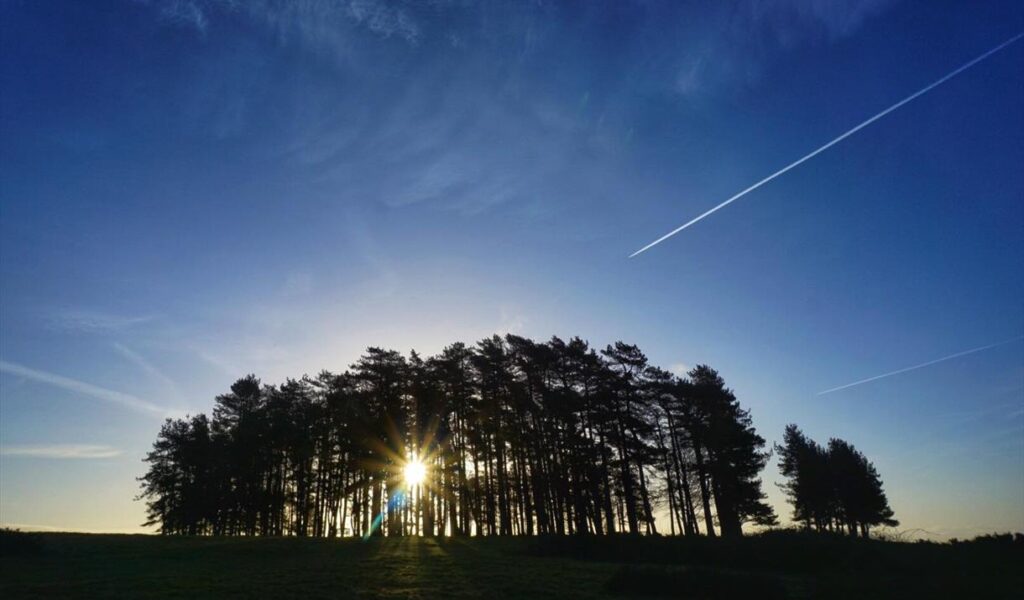The Forest of Dean & Wye Valley has so many beautiful locations, but where do you choose for one of the most important moments of your life? You may know exactly where you’d like to propose. You may know exactly how you’d like to do it. Or you may be looking for some inspiration. If so, we hope that this article will help you.
You could opt to book onto our Proposal Package or book a hamper to pick up from us to take with you. Our perfect picnic proposal locations include:
1. May Hill
May Hill is one of the most familiar landmarks in the east of the Forest of Dean and at 296 metres (971 feet) it is the highest point around. There are views from the top for many miles in all directions and on a clear day you can see up to 12 other counties. Its summit is on the western edge of Gloucestershire and its northern slopes in Herefordshire. The trees atop May Hill date back to ancient times and have been recorded several times throughout history. However, how the clump of trees ended up there and why has been the source of much myth and legend. They would make a stunning backdrop to any proposal.
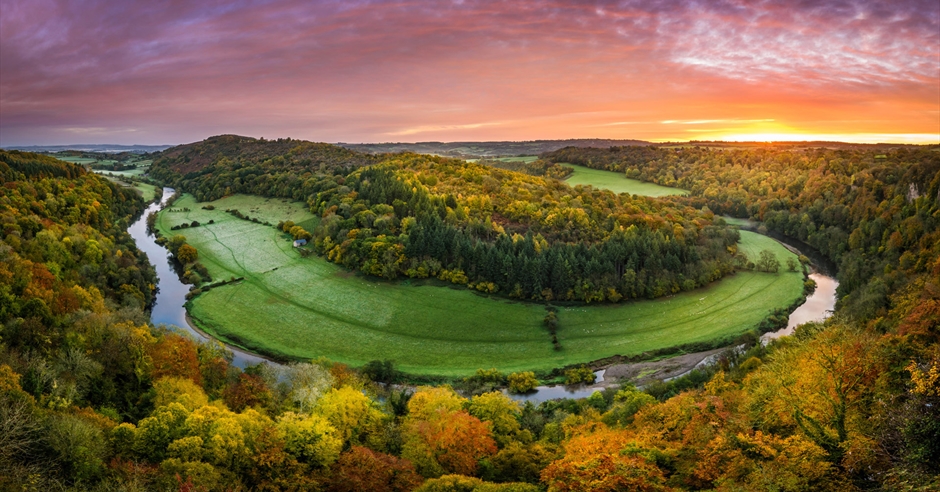
Admire the picturesque views of the River Wye and surrounding area from this internationally famous viewpoint. Symonds Yat Rock is home to an Iron Age hillfort built around 2500 years ago. The area is now a Scheduled Ancient Monument. The remains of the ramparts can still be seen in the form of a series of banks and ditches. Symonds Yat Rock viewpoint is well known as one of the best places in the country to watch Peregrine Falcons. However, with a little patience, there are many other birds that you can seen here. Goshawks can be viewed in detail, Sparrowhawks are frequent and breed in the trees in the valley as do Buzzards which can be seen from above whilst soaring. Ospreys also often stop here in the spring and autumn migration. Tawny Owls are sometimes seen roosting and hooting males are occasionally heard during the day. Barn Owls, Ravens and Kestrels also usually nest nearby.
3. Cathedral Window on the Sculpture Trail
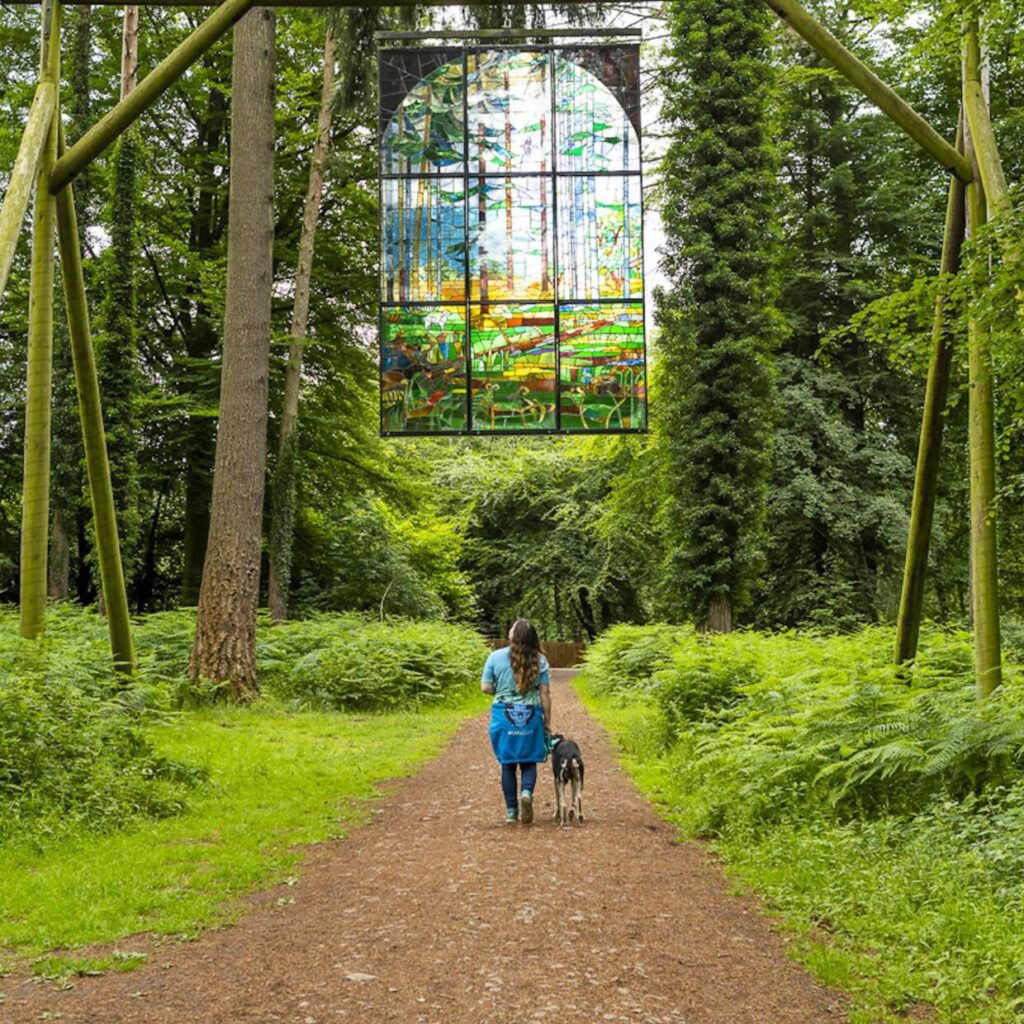
One of the most mesmerizing pieces on the sculpture trail is a stained glass window called “Cathedral,” by artist Kevin Atherton. The colorful window dangles among the trees, supported by wooden beams that form the skeleton of a building. Natural light dances through the window, igniting its splendid colors and dappling the surrounding woodland. As you step back to admire it, you’ll truly feel as if you’re in a forest cathedral, complete with walls of trees, a lush ceiling of leaves, and of course, the stained glass art that celebrates the natural world. The trail was established in 1986, and has hosted a medley of permanent and temporary exhibits ever since. The blend of small and oversized art pieces both blend into the forest and stand out. Each piece is unique and is worth stopping to admire.
4. The Kymin
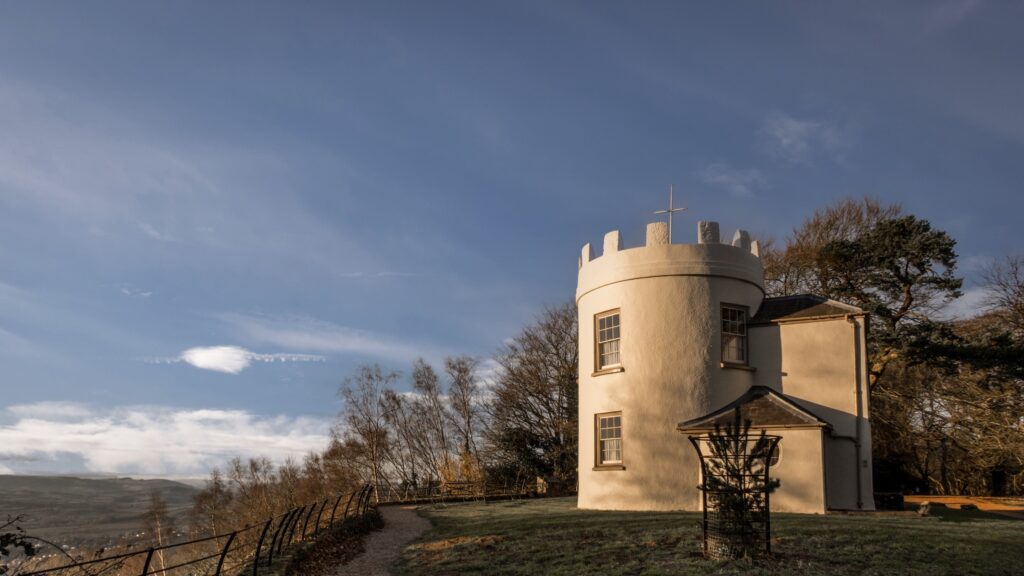
Standing proudly atop a prominent hill, the Kymin and its nine acres of pleasure grounds, overlooks Monmouth and the beautiful Wye Valley. There are stunning views on both sides.
Once part of the enormous Monmouthshire estate of the Duke of Beaufort, the Kymin’s fortunes have fluctuated over the last two centuries. Originally a popular picnic site in the late 18th century, building on the Round House commenced in 1794.
The Kymin is also home to the unusual Naval Temple. The Kymin Club arranged for the Naval Temple to be built with moneys raised between themselves and public subscription in 1800, it celebrates some of the greatest British admirals and victories of the time.
Today the Kymin is the perfect place to escape the hustle and bustle and enjoy a picnic against the stunning backdrop of the Wye Valley and the Brecon Beacons.
5. Eagles’ Nest
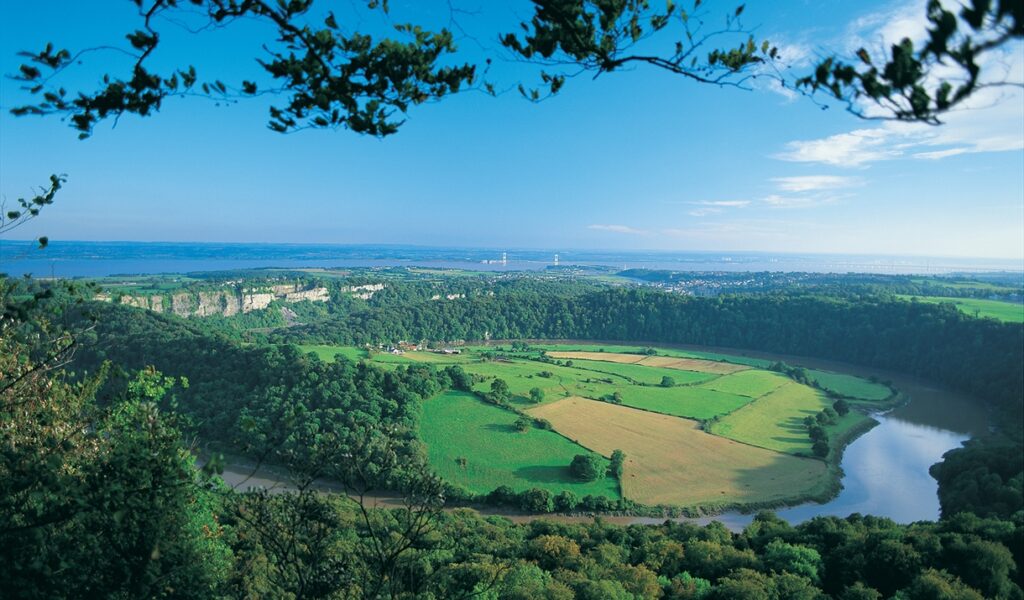
Looking East it’s ideal for sunrises and has breathtaking views across the lower Wye Valley, the rivers Wye and Severn, Chepstow, the Severn Bridges and the Cotswolds hills in the distance. Apparently you can see seven counties on a clear day! Eagle’s Nest is situated at the top of a steep, wooded limestone cliff and is along the national trail the Wye Valley Walk. It is the highest point on the Monmouthshire bank of the Wye, at 771 feet (235 m). The viewpoint was built in 1828 for the Duke of Beaufort as an extension to the walking path network already developed around the nearby Piercefield estate. It has been described as “one of the most impressive viewpoints in the British Isles”.

